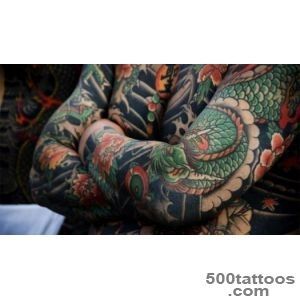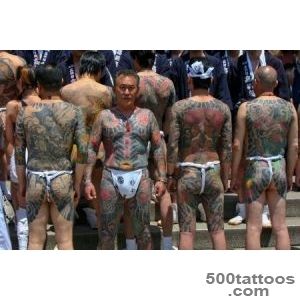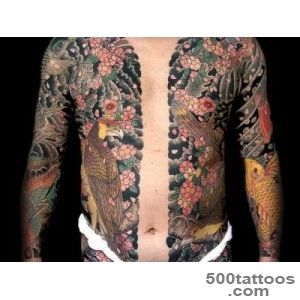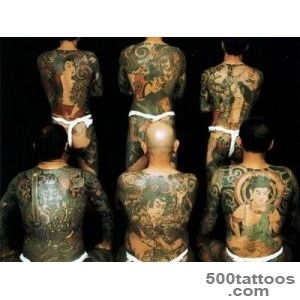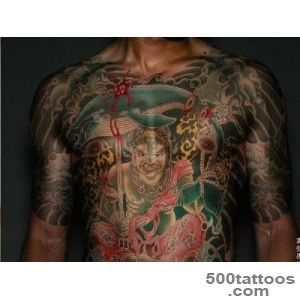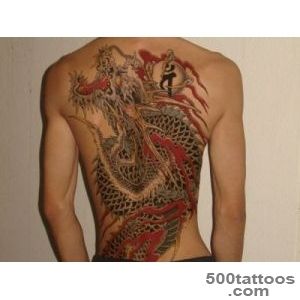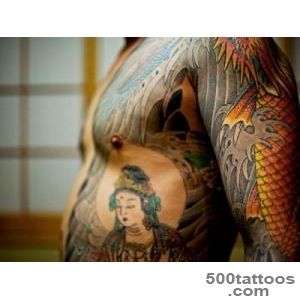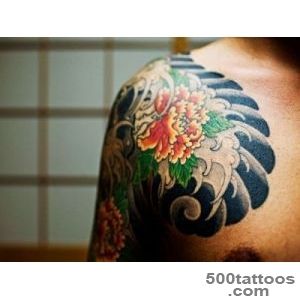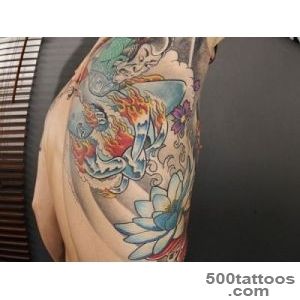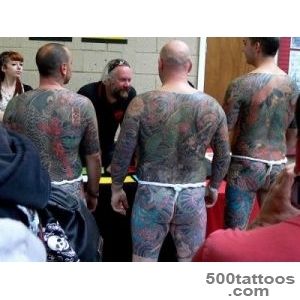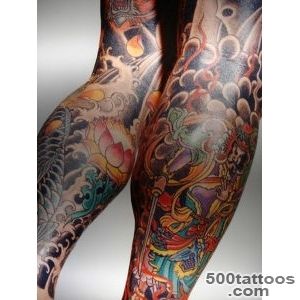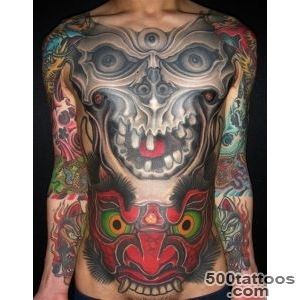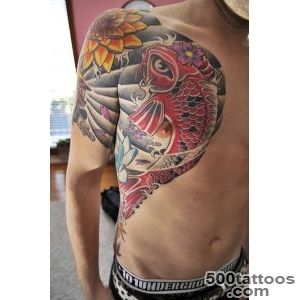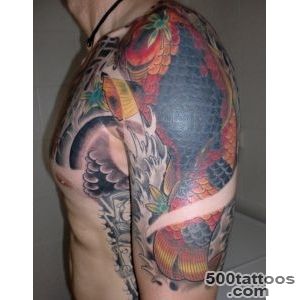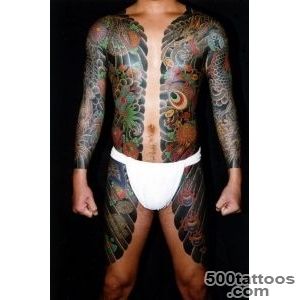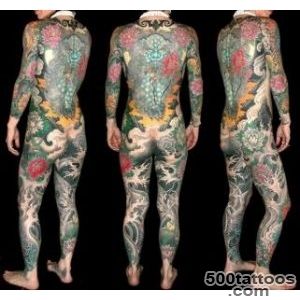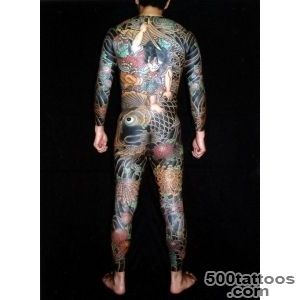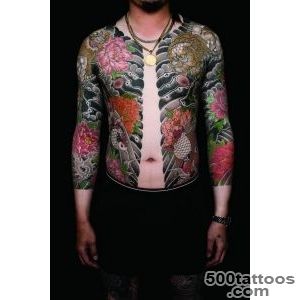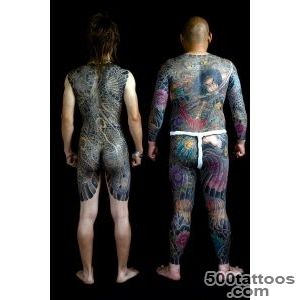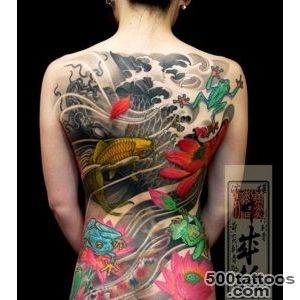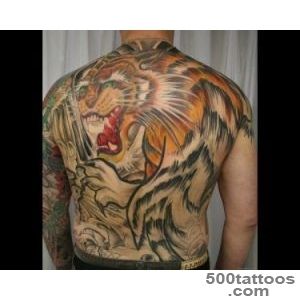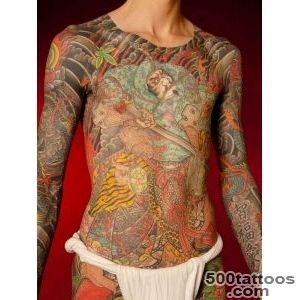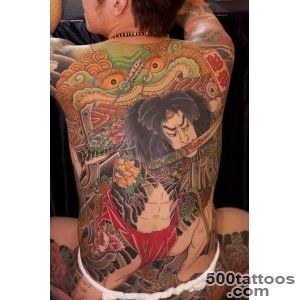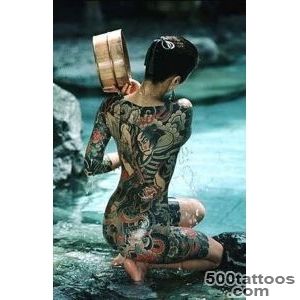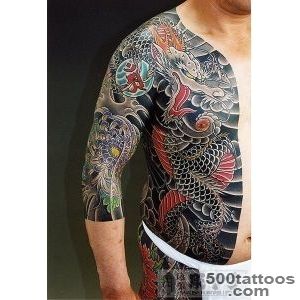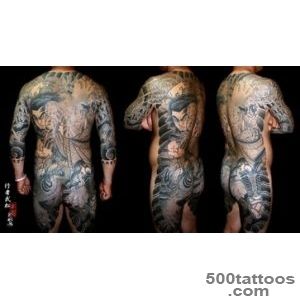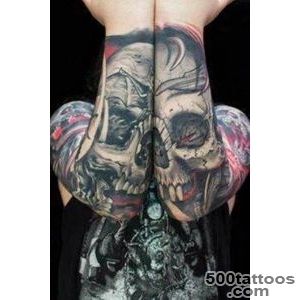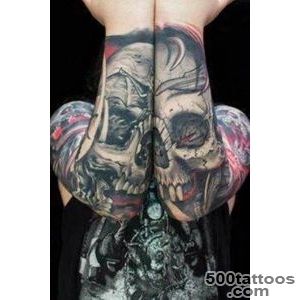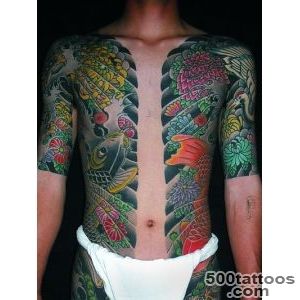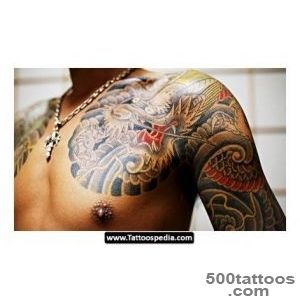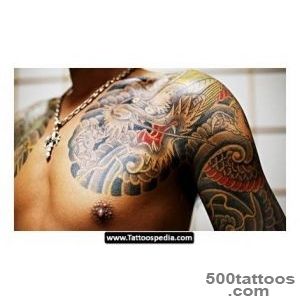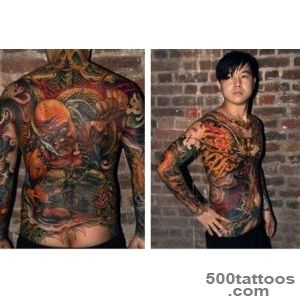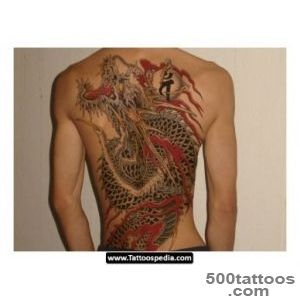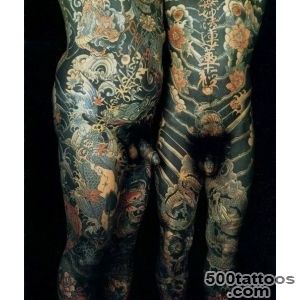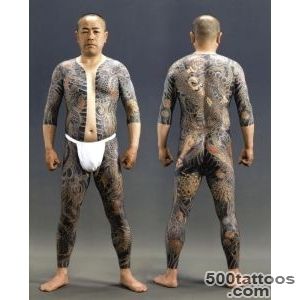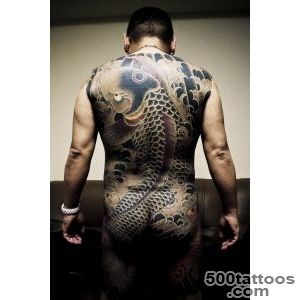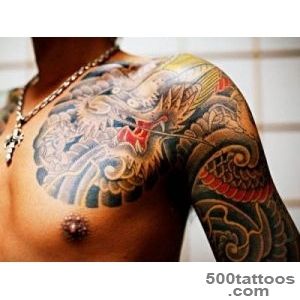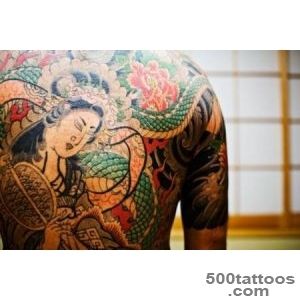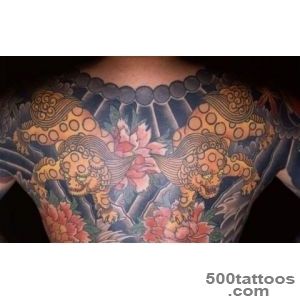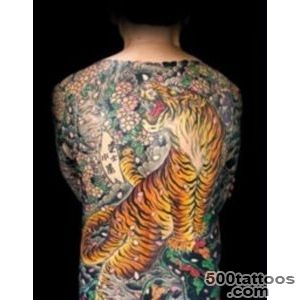Yakuza tattoos
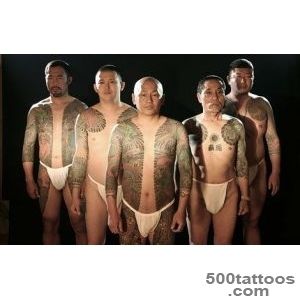
Five hundred years in Japan decoration of his body tattoos was the exclusive privilege of the emperors, and was only later that it could turn to the decorative arts. Over time, tattooing has become an attribute of the criminal world, people with tattoos have become persona non grata : they could be expelled from the family and even the society,doomed to isolation from the human world. The tattoo on the body of criminals was made in a conspicuous place and could tell where the man was sitting. Over time, one of the hallmarks of a criminal become a yakuza tattoo. Many peasants who joined the yakuza, received a new name, which sounded bellicose : Nine Dragons,Tiger and other names and symbols as applied to the chest or back of a person.
Tattoo yakuza
The classic Japanese tattoo, which was inherited by the Yakuza, is a very beautiful, diverse of subjects and colors, carrying a hidden meaning, incomprehensible to others, to the uninitiated people.Usually yakuza tattoos depict religious themes or legendary heroes, where the pattern can be combined with flowers, animals, scenery, against the backdrop of the waves, the rays of the sun, clouds, or with 3D effects. Subjects of the Japanese Yakuza tattoos have a wide variety of motifs, which are divided into four types : flora, fauna,mythological and religious motives that are related to the adventures of the heroes in the picture. Also Yakuza tattoos have marine and aquatic subjects as the life of all Japanese people connected with the sea. Often next to the water wave pattern motif appears as a background. In Yakuza tattoo can be seen any national heroes or courtesans, geisha,actors, sumo wrestlers.
Japanese tattoo
All go into the Yakuza clan is currently not allowed to show their tattoos in public. The only exception - a celebration of Sanja Matsuri, which is held annually in the temple of Asakusa ( Tokyo). Interestingly, about 68 percent of people have tattoos yakuzaalthough most of these gangsters displays insignia. From a historical point of view, tattoos were a symbol of human output under the control of the parents. From 1872 to the fifties of the twentieth century, the tattoo was prohibited in Japan, and was easily recognizable to the yakuza.
